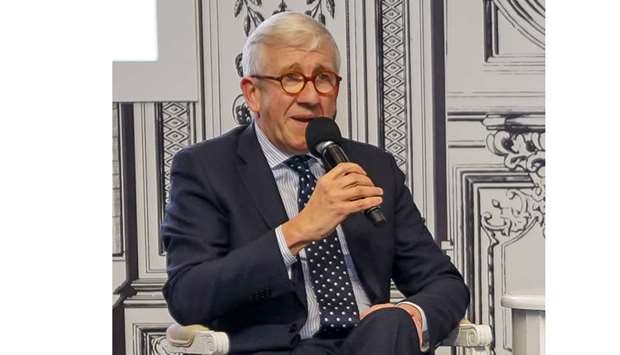The book fair is literally international at its core as publishers and writers from around the world simply love to attend the event.
Every year, there are writers and publishers coming from France to attend the book fair. Their participation became much more important this time as 2020 is being celebrated as the Year of Culture between Qatar and France.
Among all the visitors coming from France, Philippe Bélaval, Director of Centre des Monuments Nationaux (Center of National Monuments), was the most prominent. The centre is a French government body, which conserves, restores, and manages historic buildings and sites which are the property of the French state.
The centre is responsible for the upkeep of around 85 monuments, ranging from the prehistoric megaliths at Carnac, medieval fortifications such as the towers at La Rochelle, and Renaissance châteaux such as Azay-le-Rideau, to Le Corbusier’s Villa Savoye. The centre is also responsible for making these monuments accessible to the public, and promoting understanding of the heritage they represent through publishing books and guides.
Community recently sat with Philippe Bélaval, Director of Centre des Monuments Nationaux, and discussed the significance of archaeological sites and their historical values.
Being head of the Centre des Monuments Nationaux, which holds around 100 monuments around France, could you tell us more about your role and what are the future plans of the centre?
My role is to enhance the legacy of the past, and to show how useful it is to increase economic and social welfare all over the country. Every monument should be regarded as an opportunity to support sustainable development.
What technology and techniques the centre uses to conserve, preserve and restore the originality of historical sites?
As far as restoration is concerned, we use both old methods and contemporary techniques. Our duty is to remain as close as possible from what the builders of the past have left for us, without neglecting all the added-value of modern technologies.
How would you define the importance of historical and archaeological sites for future generations?
Monuments and archeological sites are landmarks for the population, they help to situate men and women of today both in space and time. They help people to recognise themselves as members of a community. They create both pride and confidence.
Is there still a trend in modern French architecture to follow and take inspiration from old monuments?
Contemporary architecture in France follows different paths. Architects certainly take inspiration from the past when they look for greater sustainability. However, their language is quite diverse.
What role can the centre play in improving cultural ties between France and Qatar?
In France, the Centre des Monuments Nationaux promotes a heritage policy aimed at economic and social development, with a deep attention paid to values. Such an approach might meet the expectations of Qatar in the field of culture.
How important is the participation of the centre in Doha International Book Fair?
Thanks to the invitation of the French Embassy and FNAC, it is the first time that the centre takes part to the book fair. It is a splendid opportunity to present the books published by the Editions du Patrimoine, the publishing company of the centre, and to invite the visitors of the fair to come to France and visit the French monuments.
What is your impression on the Doha International Book Fair in comparison to other book fairs in the world?
I have been strongly impressed by the number of students visiting the fair with their teachers. Such visits are a good way to transmit the taste of reading and of culture.



